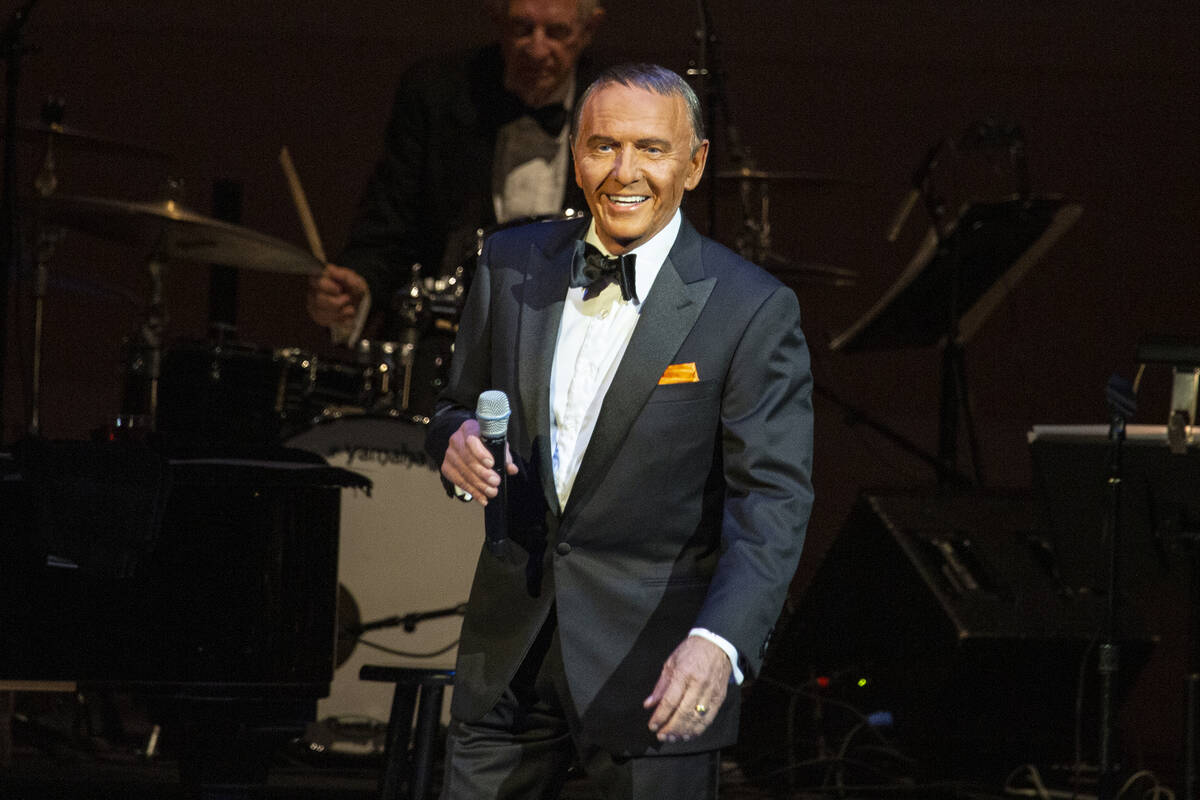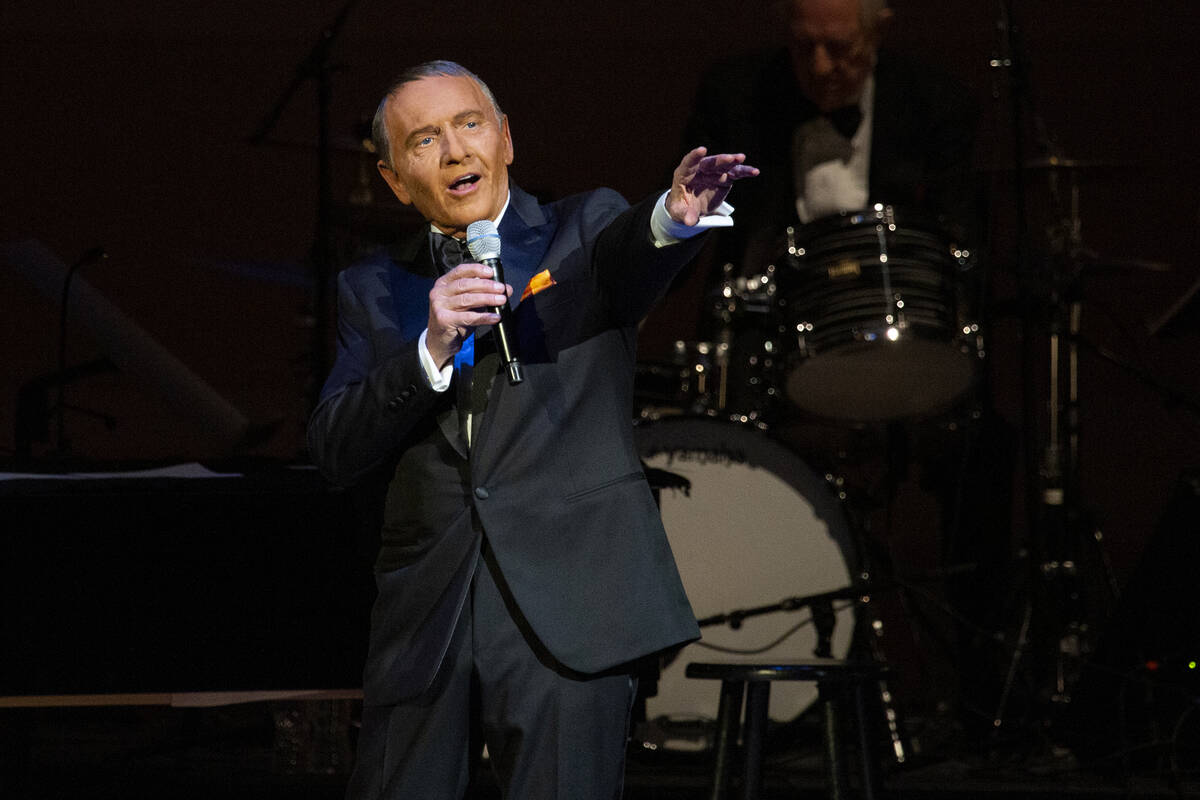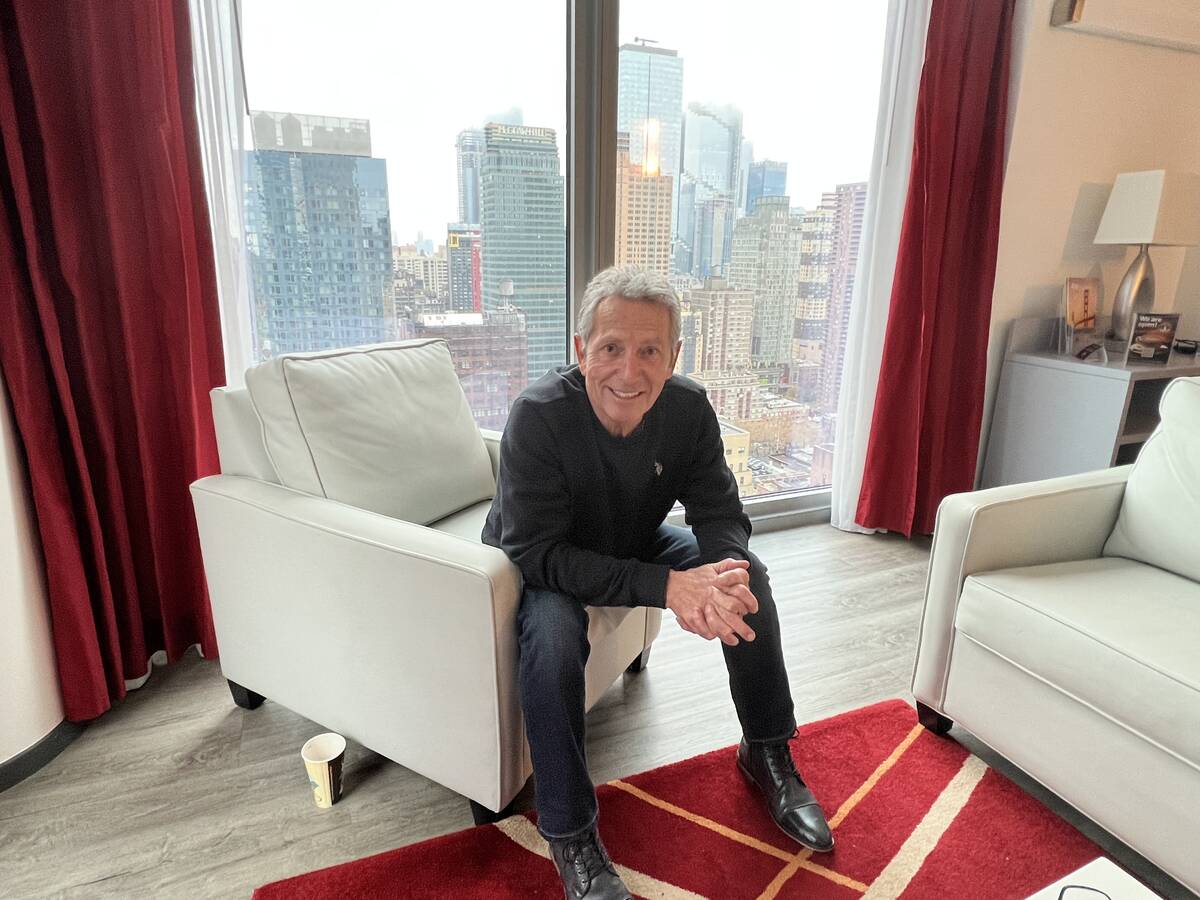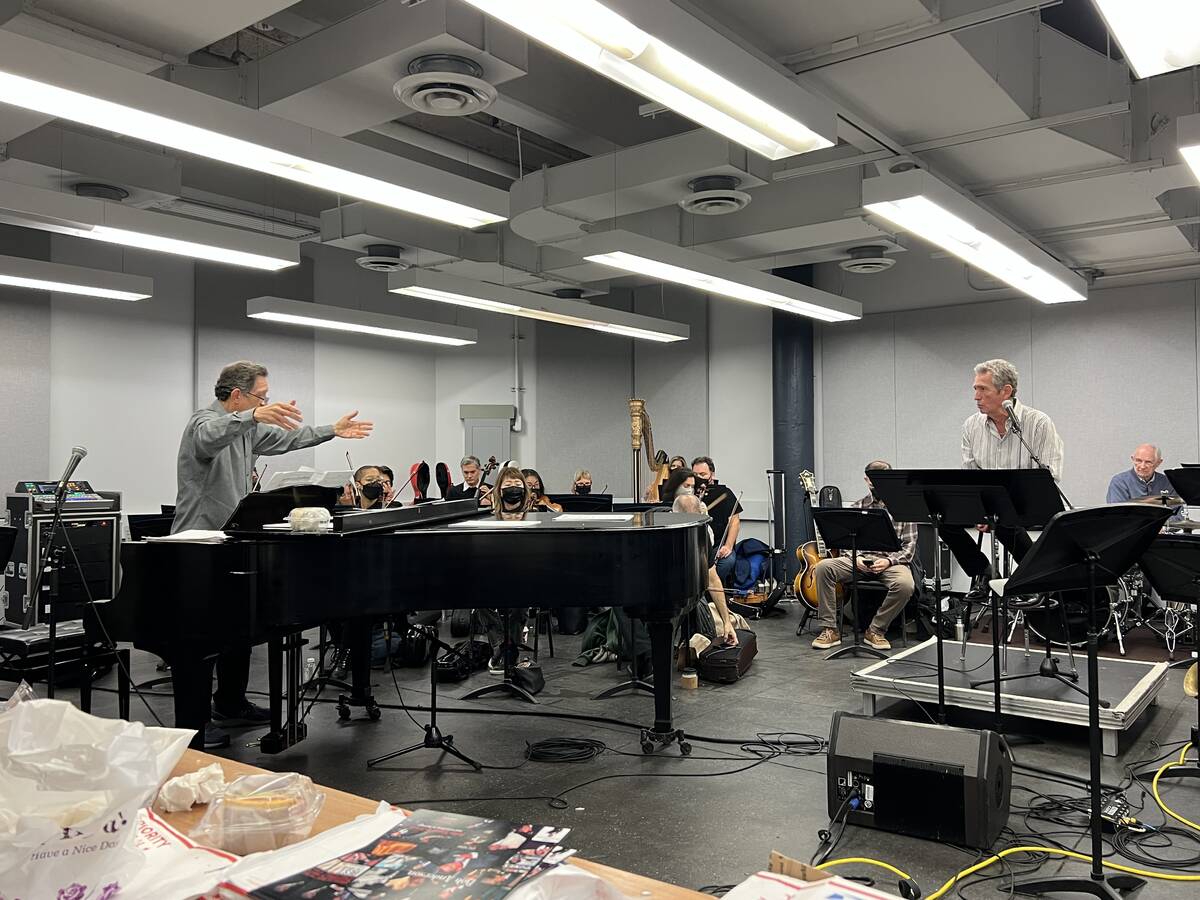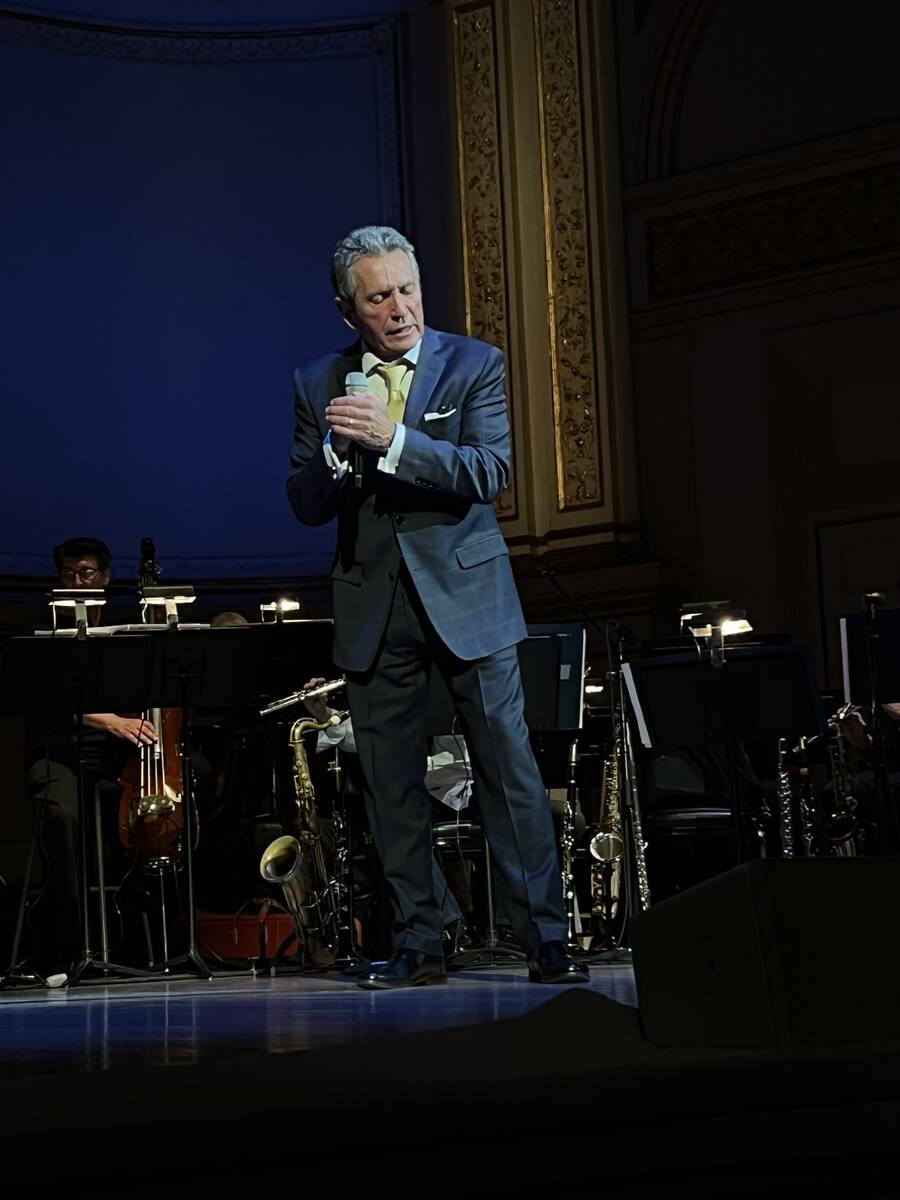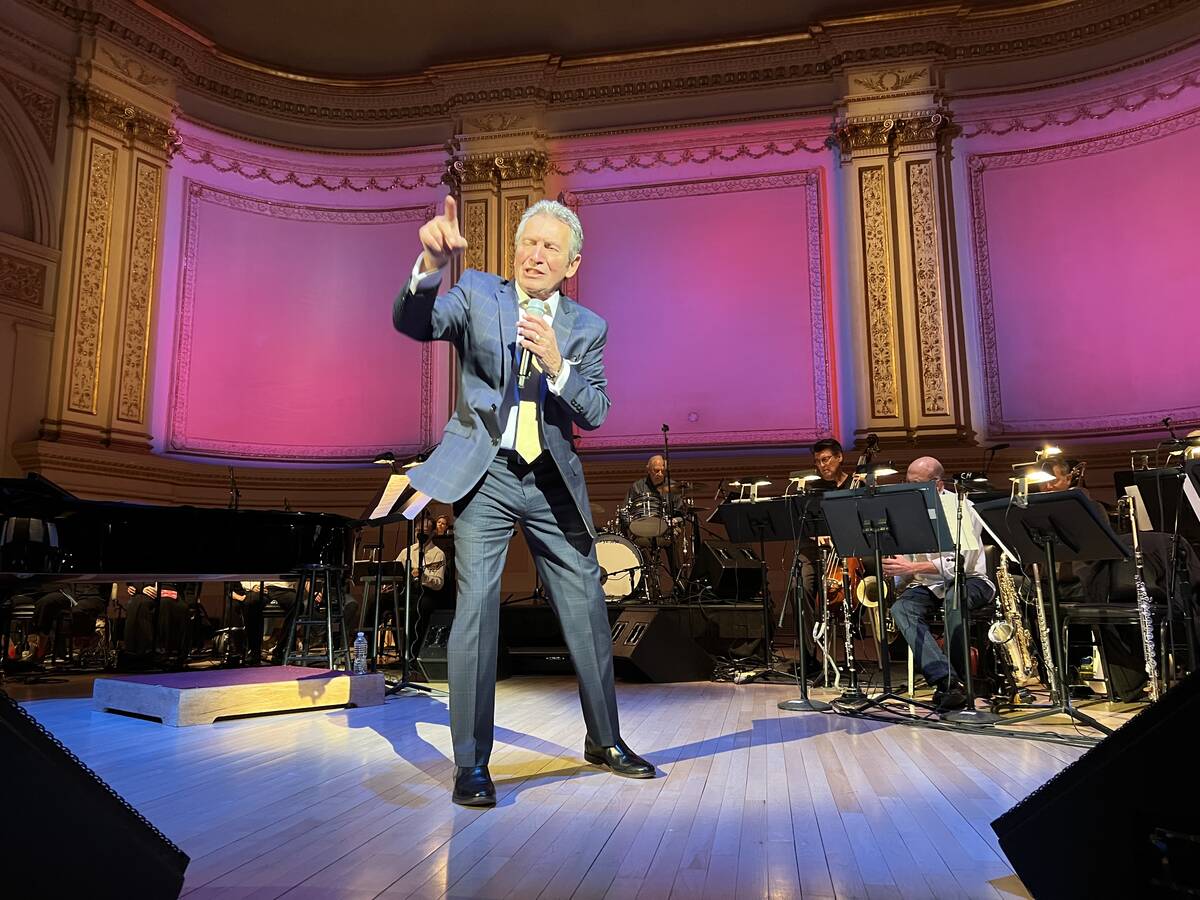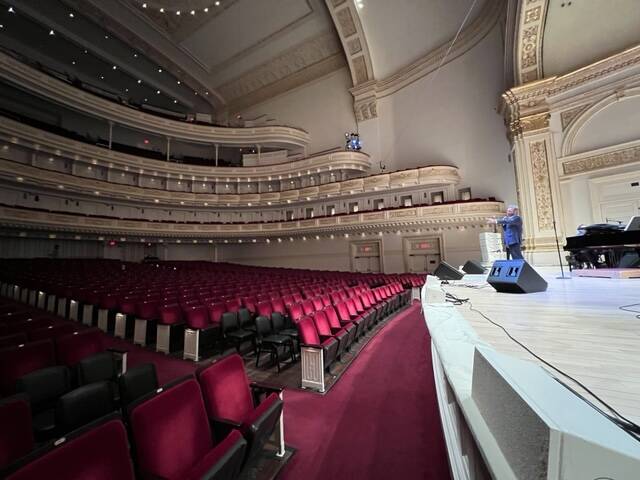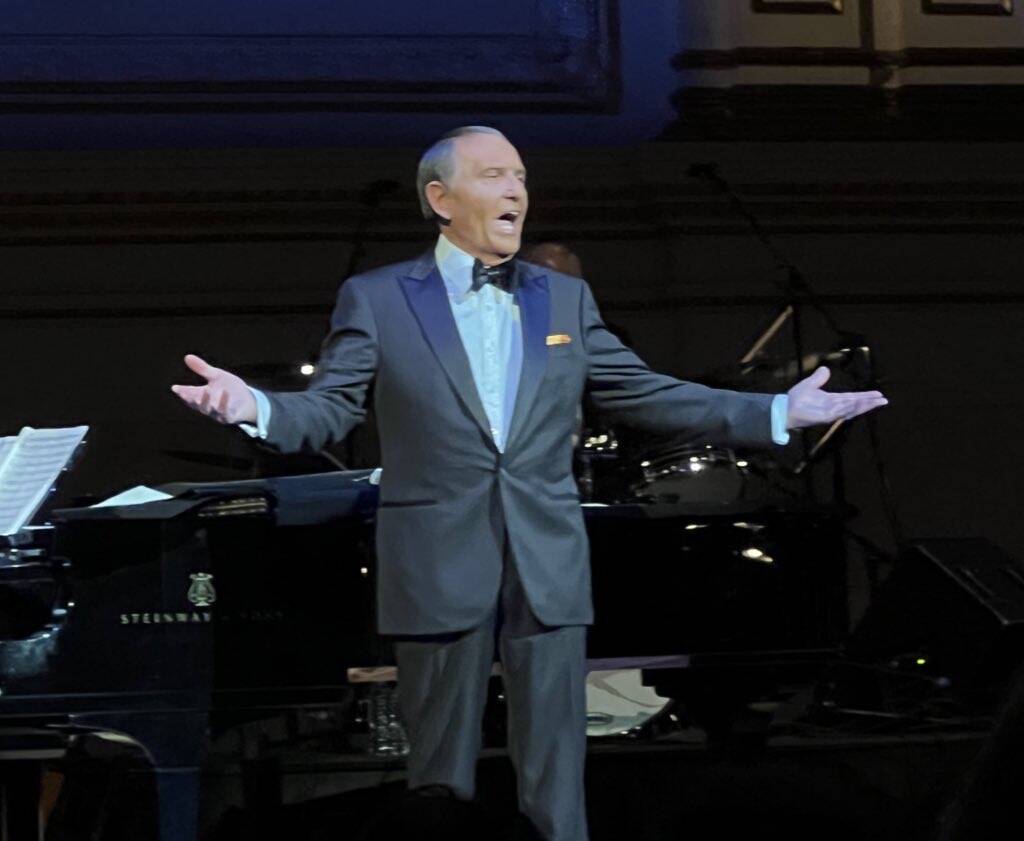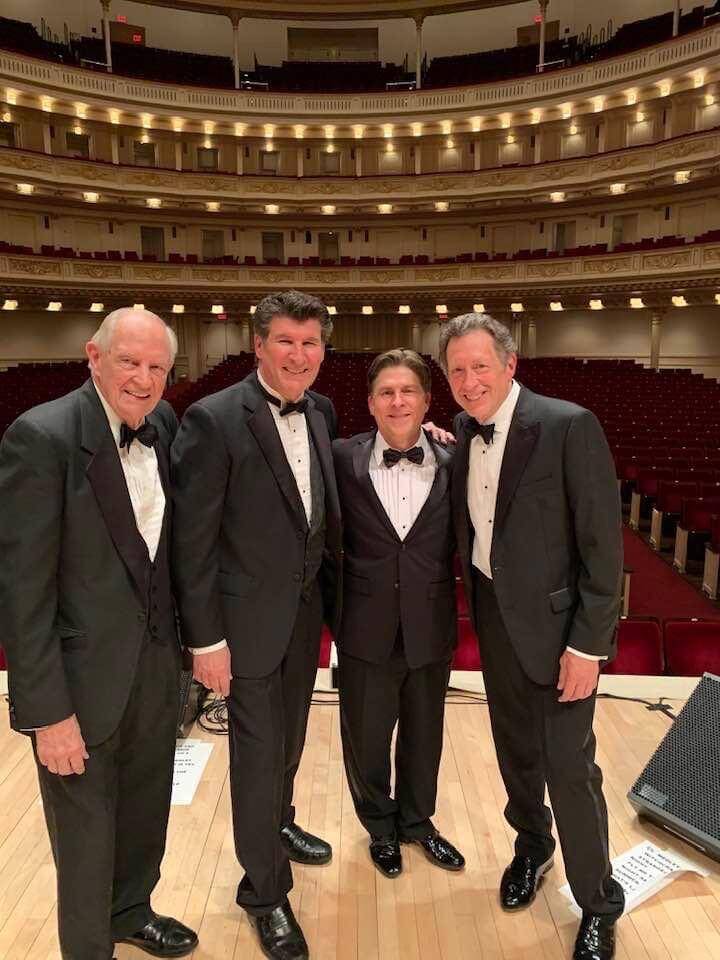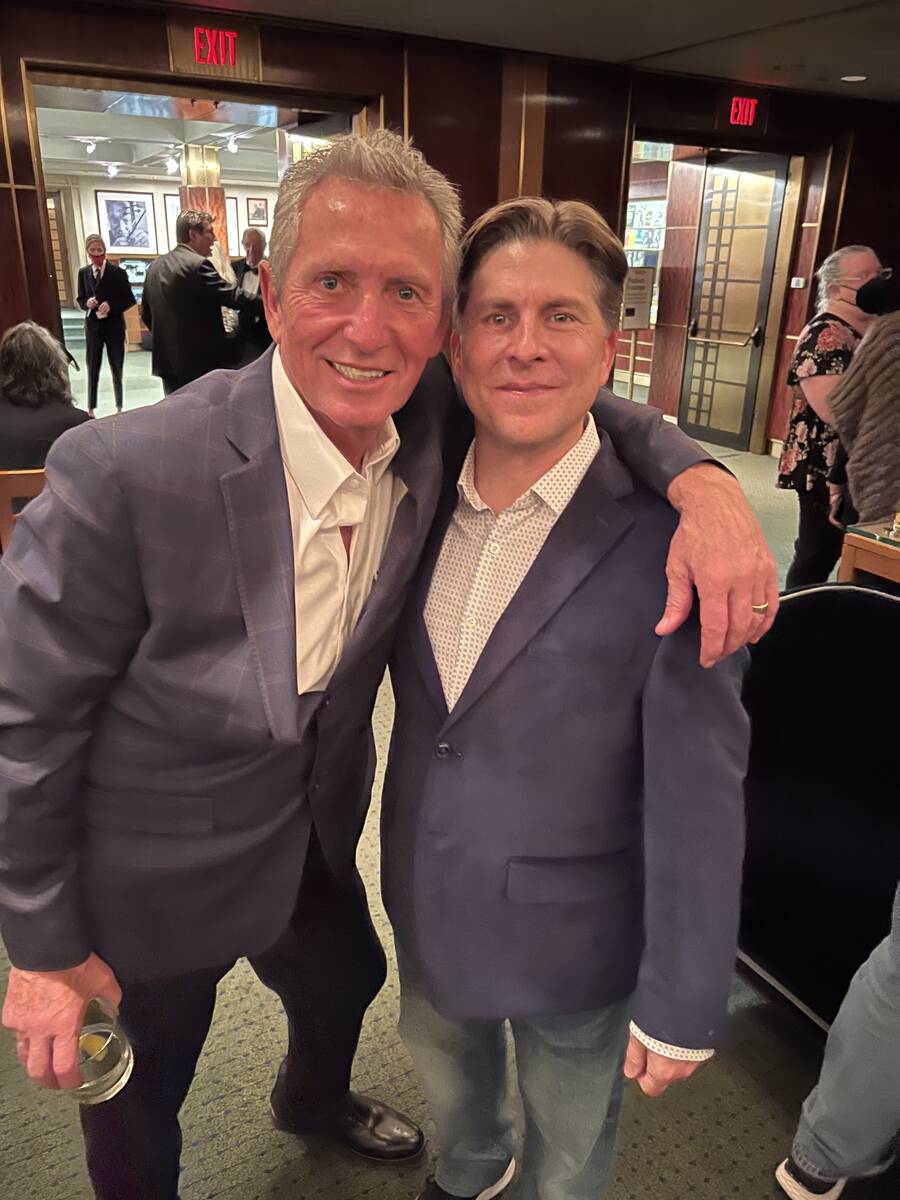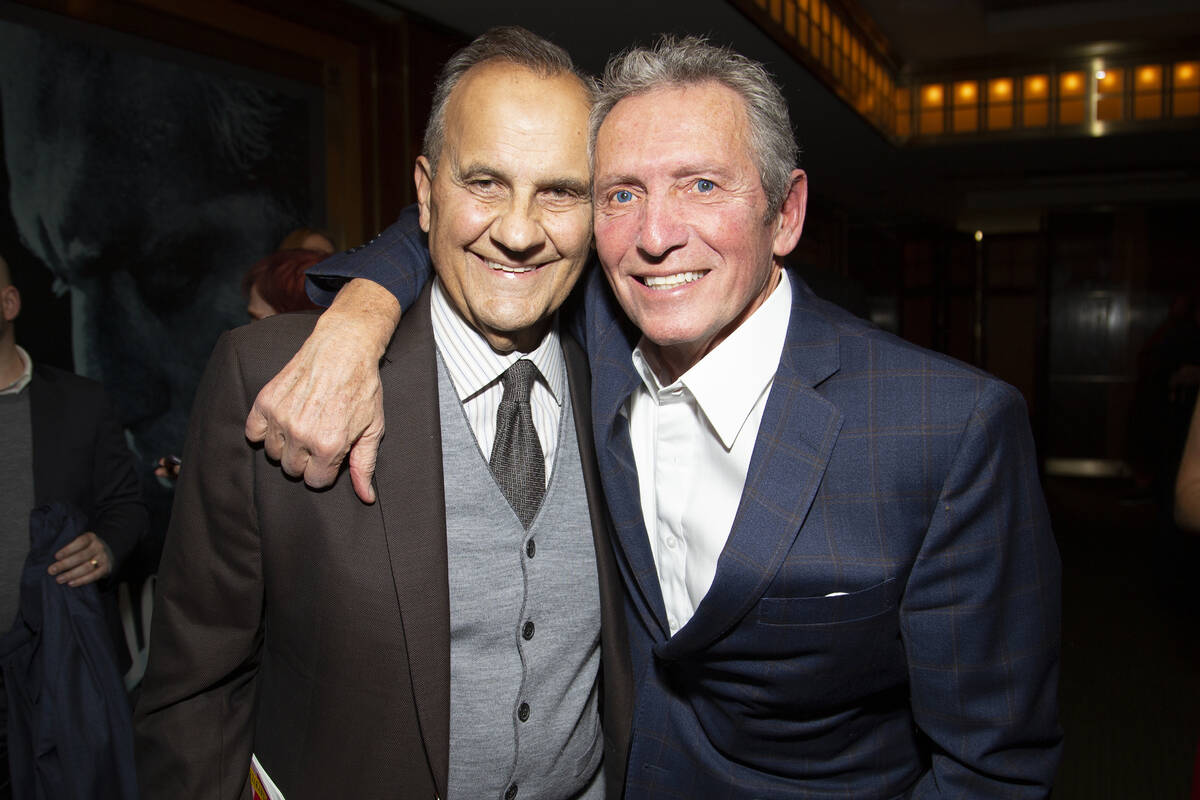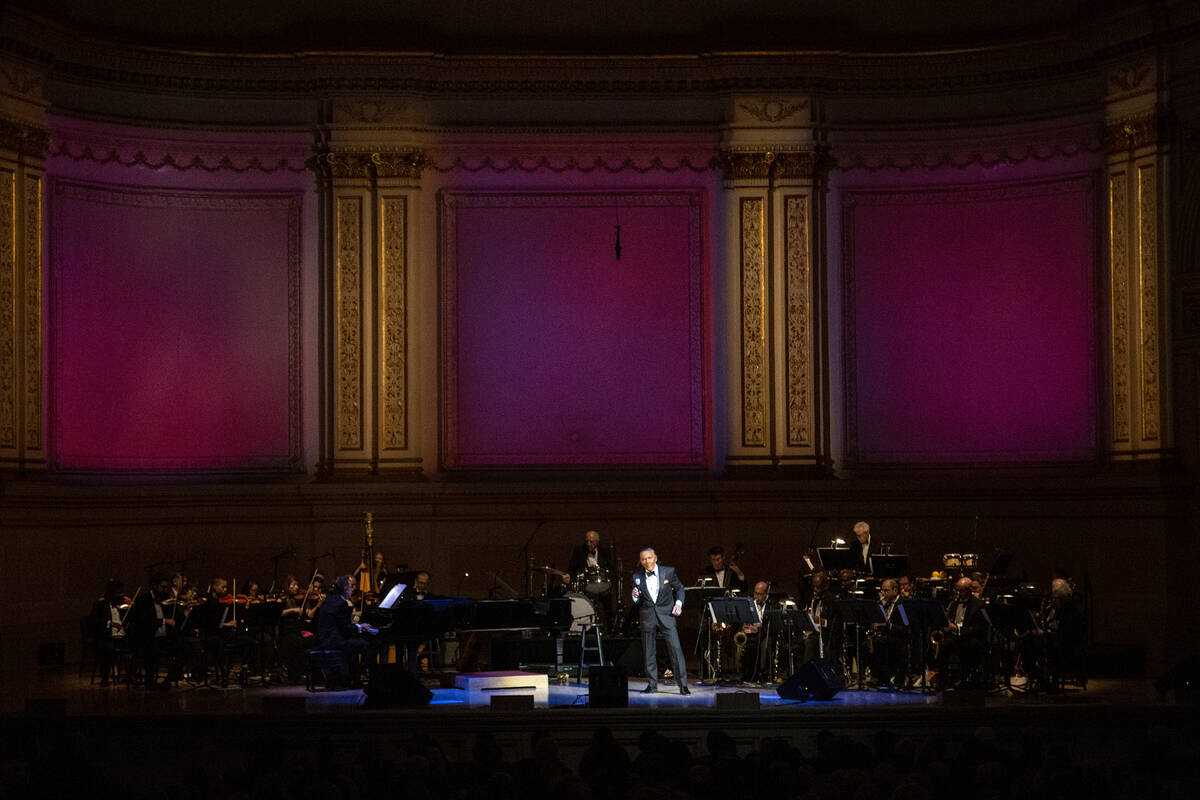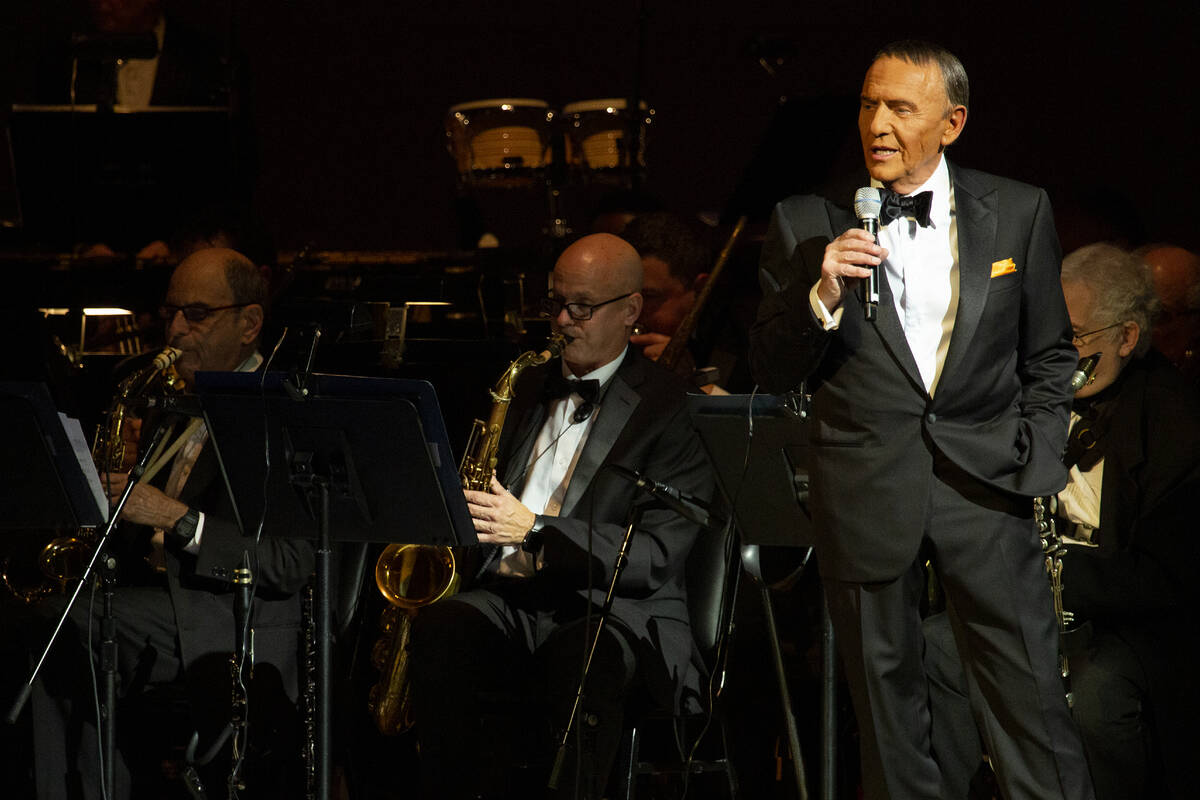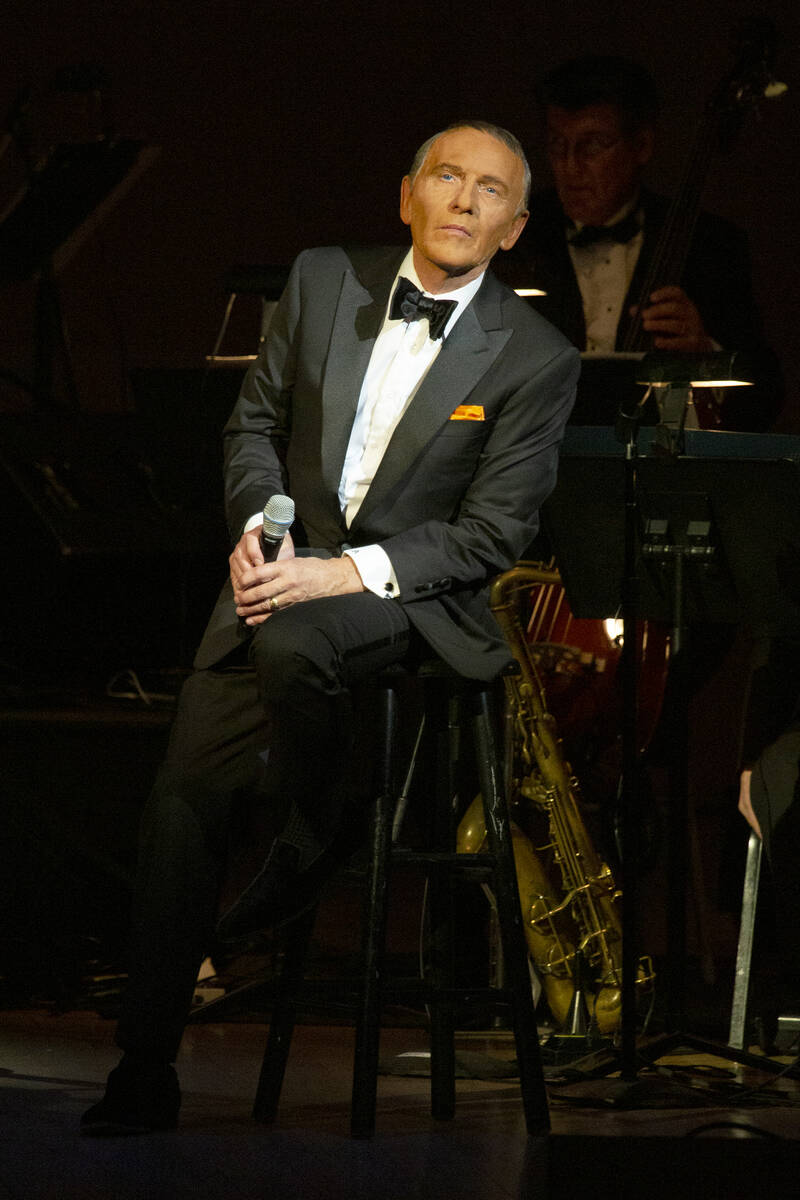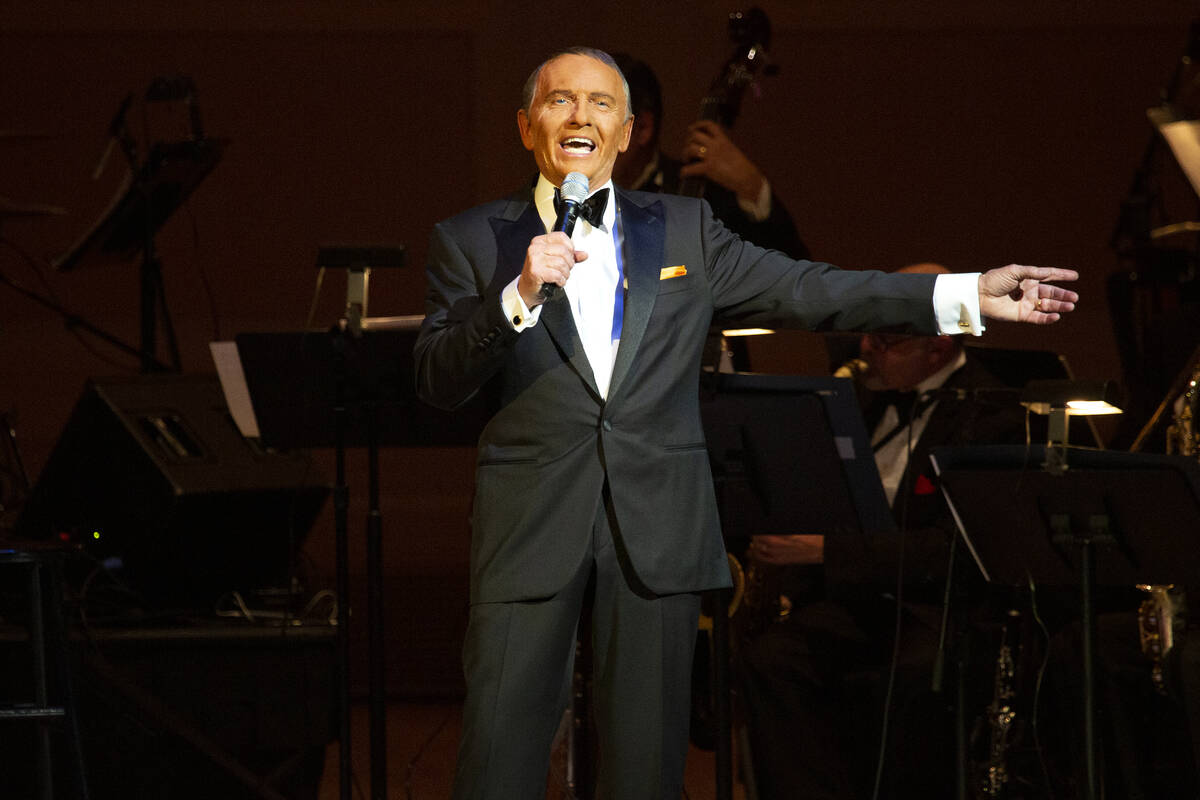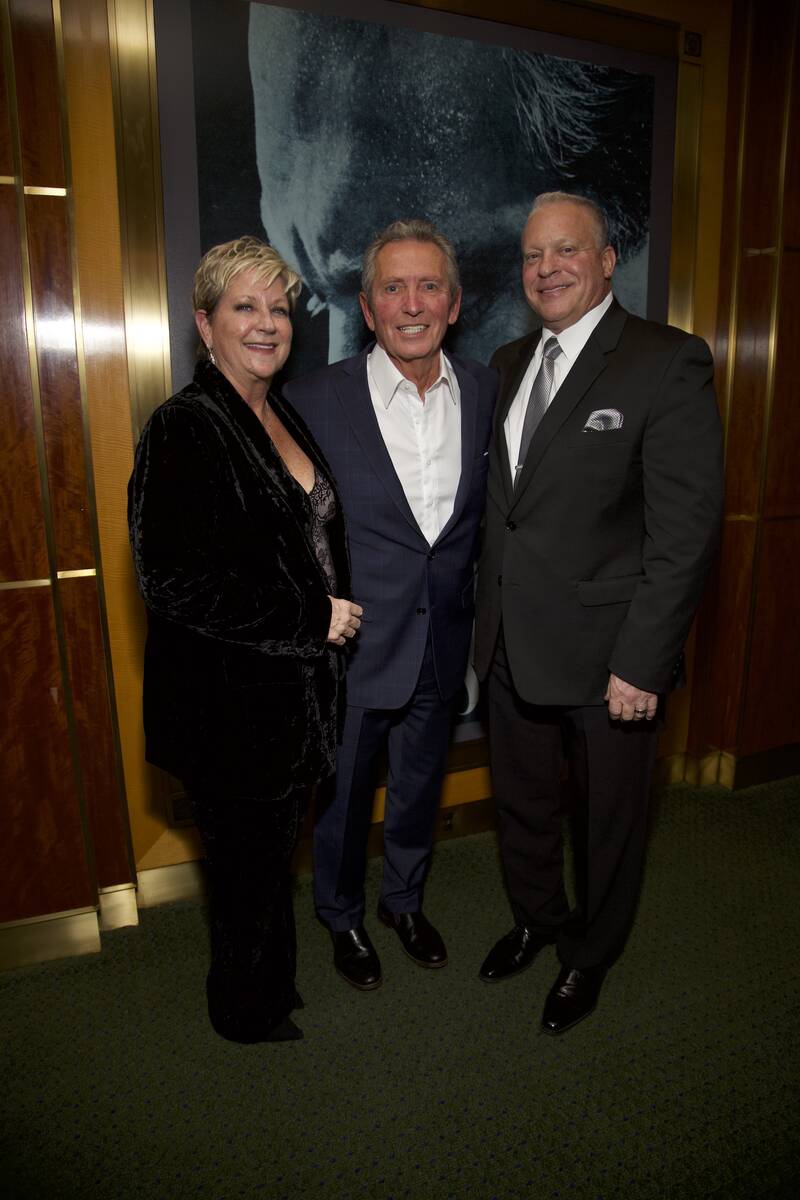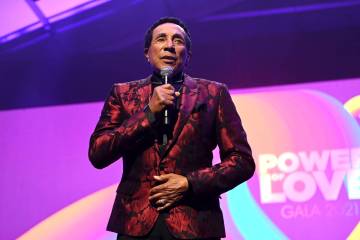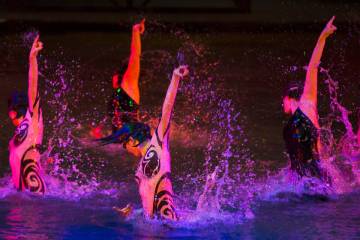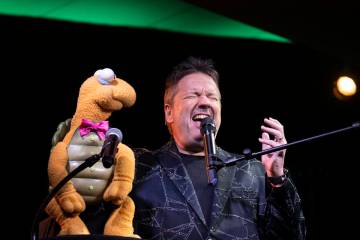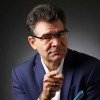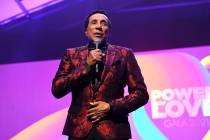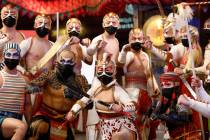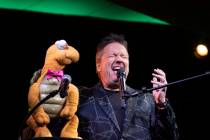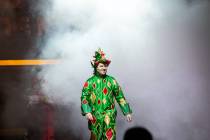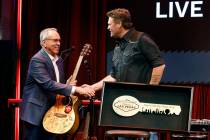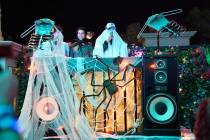Vegas lounge legend Bob Anderson takes on Carnegie Hall
NEW YORK — The man in the tux rekindles a time so long ago. “When I was 17, it was a very good year,” he sings, evoking images of small-town girls, and soft summer nights.
But there’s no hiding from the lights, not tonight. We know where Bob Anderson is taking us, to the autumn of his years. The Las Vegas lounge legend is now center stage at Carnegie Hall this Saturday night, filling the hall with the voice of Frank Sinatra.
The classic Sinatra timbre rides a wave of music by a 32-piece orchestra. Anderson has been remade to look just like Sinatra, the artwork from makeup designer Ron Wild. The singer wears a $3,500 tux he bought just for this show. His mannerisms, the cock of head and casual flip of the backhand, are all there.
At times you feel Old Blue Eyes himself has inhabited Anderson’s physical being. In an age where a hologram could be created to play this show, Anderson is starring in a kind of movie come to life. The singer is leading us to a Sinatra show at Circus Maximus at Caesars Palace, or before then the Copa Room at the Sands.
Are we watching the autumn turn to winter tonight? It feels the culmination of Anderson’s rich career as an all-time impressionist, or “interpreter,” as the description has evolved.
But it’s not the end, not for Bob Anderson, who starred at the Top of the Dunes for a decade ending in 1985, and was a fixture on the Strip and national-TV talk shows for a generation. He and is team are convinced it is the start. Sinatra’s 106th birthday would be Dec. 12, just a night after this show, but they are treating this tribute as a new adventure.
Luck Be a Lady
For Anderson’s Sinatra show, Carnegie Hall’s Stern Auditorium/Perelman Stage is without question the platform for something bigger. His production team rented the space, spending at least $150,000 for to pay for the venue for this one show.
In effect, Anderson has turned the historic hall into a regal auditioning platform. Between a half-dozen and 10 owners and representatives of Broadway theaters arrived to check out this show, formally titled, “One More For The Road.”
“I want to people to know what’s happening over here,” Anderson said in his hotel suite overlooking Manhattan the morning of the show. “They may think that Carnegie Hall took Bob Anderson, rather than our people paying for the thing for Bob Anderson to be on that show. That is the case.”
The show was performed for members of the Nederlander Organization, which controls nine theatres; and Jujamcyn Theaters, which own five Broadway venues. The Shubert Organization, which owns 17 theaters, is reviewing film from the footage that was taped by the Carnegie crew.
And hey, Anderson might turn the whole saga into a reality show. The scramble for the show to adhere to the state and venue’s pandemic policies itself would be worth an episode.
Anderson said the Carnegie Hall production was able to recoup its investment. Official numbers are 2,238 tickets sold, about 150 more comped — the vast majority to first responders invited to the show — in a hall seating 2,804. It is easily the largest theater crowd in New York on the night of the performance.
It’s also the largest audience assembled at Carnegie Hall during COVID, a stat that should stand for the foreseeable future as New York’s mass-gathering policies change by the day because of the Omircon variant surge.
Anderson’s entourage is led by primary backers and co-producers, Keith Maas and Carolyn Klucha of Twin Palms Entertainment. The relationship is familial, as Klucha is also Anderson’s niece.
Maas and Klucha began following Anderson in 2018, and jumped onboard as producers in September. Twin Palms teamed for the Carnegie Hall show with Bob Anderson Productions. That company received a Shuttered Venue Operators Grant (SVOG), which funded the Carnegie Hall show.
In addition to the production lineup, headed up by Anderson, along Dianne Russomanno works as business manager, Stephen Eich is back as director, and Patricia Dockswell as production manager. This is a tight, dedicated group.
The Sinatra show has been Anderson’s passion, and even artistic obsession, for upwards of a decade. He can perform many impressions, of course, from Tony Bennett, Dean Martin, Sammy Davis Jr., Tom Jones, Johnny Mathis, Bobby Darin and Nat King Cole. But it was his Sinatra interpretation that led to his run with “Frank. The Man. The Music” at Palazzo Theater. That show performed for a year on the Strip, closing in November 2015, just before what would have been Sinatra’s 100th birthday.
That decision stung Anderson. He wanted to be onstage, as Sinatra, for No. 100. As it was, he refused to allow his show to perish. He built a team to present a concert video at Avalon Hollywood theater in Los Angeles in 2017, with Todd Fisher’s production company at the helm. That footage was also sent to Broadway operators.
In December, Anderson forged a partnership with Tony Award-winning theater exec Eva Price and her partner, Carl Flanigan, and their Maximum Entertainment Company. Price’s credits include by “On Your Feet,” the Gloria and Emilio Estefan story; “Dear Evan Hansen” and the revival of Rodgers & Hammerstein’s “Oklahoma.” She’s worked with more than 15 Broadway musicals, plays and concerts and is a member of The Broadway League’s Board of Governors.
As a result, Anderson’s Sinatra revival was in line for a theater, with talks ongoing, until COVID wiped out all Broadway shows. Carnegie Hall was Anderson’s next destination, to relaunch his Sinatra musical for interested theater operators and keep this dream alive. As Anderson said, “We wanted to be able to market this show as being Sinatra from Carnegie Hall. That would be a powerful selling point.”
In that regard, the win was in, the moment Anderson stepped onstage.
“To me, having not sung as Sinatra in so long, I felt good,” Anderson said. “But more important, I felt the audience loved it. I really felt the energy on that stage.”
Come Fly With Me
Anderson took a quartet of classic Vegas musicians to make up the core of his orchestra, otherwise filled with many of New York’s finest players.
Joey Singer, who spent more than a quarter century touring with Debbie Reynolds, is pianist and music director. Bob Sachs, whose Vegas performances date to Sam Butera and Keely Smith and who backed Wayne Newton, is on bass. Bob Chmel (Frank Sinatra Jr., Pia Zadora, Jerry Lewis, Bob Hope and Doc Severinsen), plays drums. And a member of Sinatra royalty Danny Falcone, whose father, Vince, was Sinatra’s bandleader for 10 years at the end of his career, is on trumpet and also contracted the entire orchestra.
All are made their debut at Carnegie Hall. It’s an interesting place to knock off the rust.
“You know the history when you walk in, you know that Tchaikovsky opened the room and Vladmir Horowitz played here. Everyone in the world has played here,” Singer said at the show’s after-party. “There is no other place for Carnegie Hall. So yeah, it’s a real thrill, it’s hard to put into words what an awesome feeling it is to be here.”
Sachs said the gravity of the show did not escape him.
“It is pretty amazing that the first show we do after being off for two years is at Carnegie Hall,” Sachs said. “Sometimes you wish you had an opportunity to do the show elsewhere, in preparation, yeah. But, you know, you just have to step up to the plate and do your thing. Overall, I thought it was a great experience.”
Chmel said, “The closest I ever came to Carnegie Hall was a town hall show here with Frank Jr. while ago, so this was a first for me. I’m 78 now, so it took a long time, but here I be! Thank you Jesus, right?”
Falcone often referred to Sinatra as “Grandpa” when he was a kid.
“I’m sitting there, looking out at the audience, and it’s just mind-blowing,” said Falcone, who has backed Celine Dion, Lady Gaga on the Strip and is a member of Santa Fe & The Fat City Horns. “It was just too much. I thought the band sounded phenomenal.”
My Way
Anderson has had to make some difficult decisions about where to spend his partners’ capital. The orchestra is not positioned on risers. They sit flat, onstage. Risers are expensive, Anderson says, $45,000 to bring in and another $45,000 to haul away. An advanced onstage monitor setup, to help the band hear what they are playing more clearly, has also been scrapped.
Of course there is no video or production effects in the show. If you are looking for LED and smoke machines ad Carnegie Hall, you’re in the wrong place.
It’s entirely music and singing, Anderson at the mic and Singer at the rudder.
Anderson glides into the performance, seeming to feel his way around the stage. He’s working out the kinks, right in front of us. He’s thinner than we remember, having lost weight after his own battle with COVID several months ago (which took him out of a weekend of shows at South Point Showroom in August).
But Anderson is forever a natural showman, having performed for five hours, unscheduled, recently at the Italian American Club’s dining-room lounge. This, about a week before what was likely the most important gig of is career.
Anderson is funny that way, taking a lounge gig as seriously as Carnegie Hall. Finally playing a full show as Sinatra, he catches his groove about a third of the way through, flying through “Get Me to the Church On Time,” “Lady Is a Tramp,” “My Kind of Town,” “New York, New York,” building to the closing coupling of “That’s Life” and “My Way.”
Anderson introduces Deana Martin, Dean Martin’s headlining daughter, and her husband, John Griffeth; and baseball legend Joe Torre from the audience. Anderson earns all of his four standing ovations from that Carnegie crowd.
And for what is next, Anderson relates talks at several venues, among them Mohegan Sun in Connecticut, and also Resorts Casino Hotel in Atlantic City He’s booked at Key Largo Anglers Club in Florida in March, and is looking at adjacent Coral Reef Reef (a favorite of Jimmy Buffet). His current Broadway general management firm, KGM, is setting up meetings with Broadway reps in January.
But as always, the clock is ticking and the calendar’s dates flipping for the headliner in the autumn of his years. Frank Sinatra’s contemporaries are no longer with us, his original fans dwindling. Few musicians ever actually performed with him in his Las Vegas heyday. And the pandemic is not cooperating. The show is beholden to forces the showman can’t control.
But the music, he says, will survive for all seasons.
“I’m showing you the way he was, and if you like Frank Sinatra, you will know most of the songs,” Anderson says. “But there will be some younger fans who will not know him, they are not gonna know these songs. OK, maybe they’ll learn something, because this is what Frank Sinatra was all about.”
John Katsilometes’ column runs daily in the A section. His “PodKats!” podcast can be found at reviewjournal.com/podcasts. Contact him at jkatsilometes@reviewjournal.com. Follow @johnnykats on Twitter, @JohnnyKats1 on Instagram.



